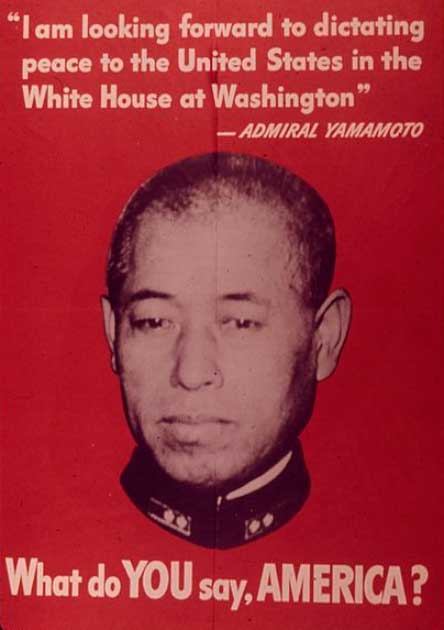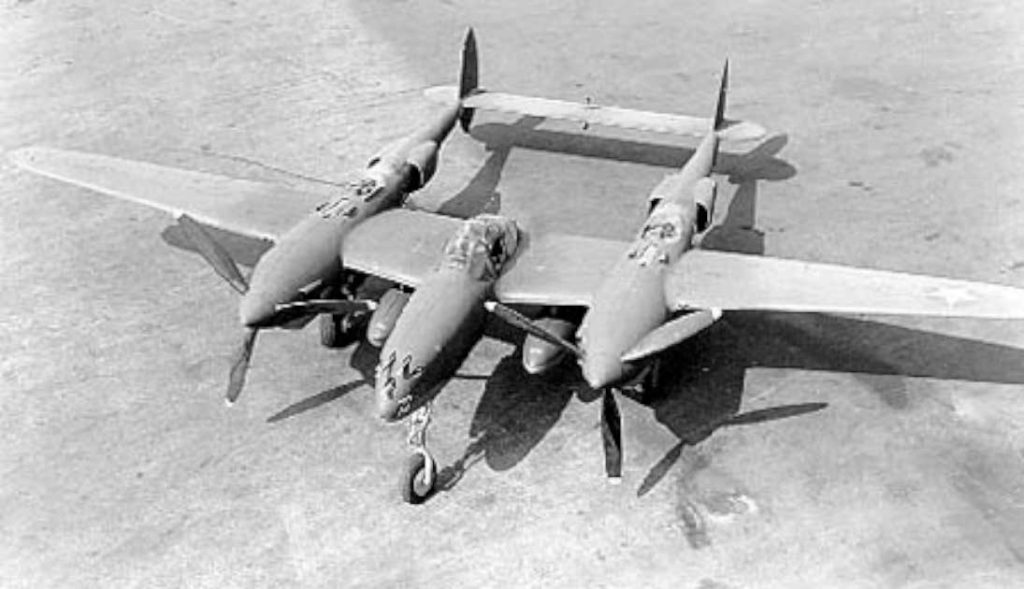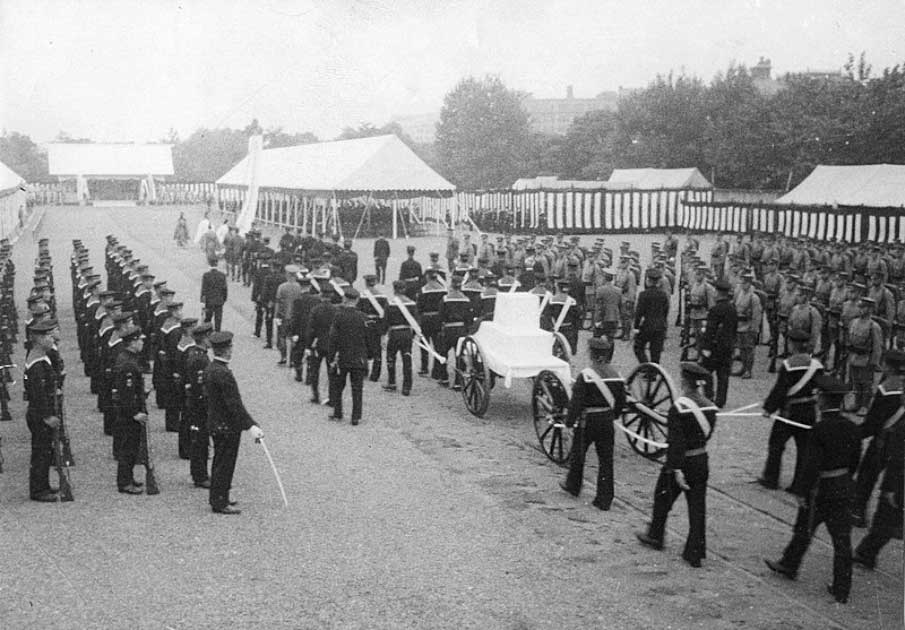Isoroku Yamamoto, commander of the Japanese navy during World War II, was a legend in Japan. The mastermind behind the Pearl Harbor attack, he was a key figure in the Japanese military, a very visible example of Japanese leadership and strength.
He was also extremely well protected, his movements and location a secret at almost all times. For much of the war he was untouchable, far beyond the reach of United States reprisals.
This is the story of how the Americans killed him.
Who was Isoroku Yamamoto?
Yamamoto was one of the most distinguished military leaders of Japan during World War II, the commander of the Japanese Combined Fleet at the peak of the fighting. A brilliant mind and a skilled and experienced military leader, Isoroku Yamamoto was initially against the war.
However, when the time came, he not only did his duty by his country but did it exceptionally well, leading many successful offensive and defensive operations against the enemy. In Japanese World War II history, Isoroku Yamamoto is remembered today as a legend and national hero who died serving his nation till his last breath.
At the age of 16, Isoroku Yamamoto attended the Imperial Japanese Naval Academy and passed out of it with flying colors. He was initially assigned to the military ship Nisshin. Known as a natural leader, Yamamoto was sent to the Naval Staff College in 1913.
He also went to Harvard University early in his life to study the oil industry. He even served as the Japanese naval attaché in Washington DC in the 1920s before World War II.

During World War II, Yamamoto was the commander in chief of the Japanese Combined Fleet. At the start of the 1940s, with the diplomatic relationship between Japan and USA degrading, the admiral started planning the Pearl Harbor attack. His aim was to destroy the US Pacific Fleet so that it was no longer a threat to the Japanese Navy.
On November 26, 1941, the Japanese Navy ships sailed to Hawaii under the leadership of Yamamoto and, on December 7, 1941, planes launched from the Japanese aircraft carriers wreaked havoc on Pearl Harbor, sinking four US battleships and damaging four more.
- Clash of Culture? When the Samurai Visited New York City
- The 1941 Attack on Pearl Harbor: Could We Have Prevented It?
Thousands of American sailors and naval personnel died in the attack, which substantially weakened the United States navy. However, it also awoke the spirit of vengeance in the American military force. Although the success of the Pearl Harbor attack gave Yamamoto the time he needed to consolidate the Japanese navy’s presence in the Pacific, it also paved the way to his death.
Operation Vengeance
Searching for a way to kill Yamamoto, U.S. military cryptanalysts intercepted radio messages to and from the Japanese Navy and the Japanese mainland. On April 14, 1941, the interceptors caught hold of a message that held the details of a flight that would carry Yamamoto to Bougainville, New Guinea, in four days time on April 18, 1941.
The message decoded by the U.S. military cryptanalysts was very precise, and gave the Americans a clear idea of Yamamoto’s movements on that day, and when he would be at any given time. The message also revealed that Yamamoto would be traveling in a “Betty” bomber accompanied by his trusted staff.
His flight would be escorted by six Japanese Zeros, formidable aerial fighter planes. With such precise information, the U.S. military was ready to strike the admiral down as payback for Pearl Harbor. Yamamoto was a high priority target.
The desire for revenge against Yamamoto, who had become the face of Japanese military ambitions, was very strong in America. Many people considered Yamamoto to be a man who had turned his back on Americans, someone who had studied and lived in America only to kill Americans years later.
The Americans had very little time to prepare the operation, which involved assembling a strike force and launching a mission across 400 miles (650 km) of contested waters, to hit a single specific bomber plane carrying the admiral. If they missed, Yamamoto would likely never be presented as a target again.
The only plane that could complete such a difficult and improbable mission was the P-38 Lightning, a formidable twin-engine heavy fighter. Lightnings were then stationed at the Henderson Field on Guadalcanal, and were the only plane with the range and combat effectiveness to defeat Yamamoto’s fighter escort and reach the admiral.

Even the Lightning was stretched to its limits by the requirements of the mission, which required a round trip of almost 1,000 miles (1,600 km). Even with drop tanks to extend the range of the attack, the fighter plane had only 10 minutes of engaging time with Yamamoto’s flight which gave it a thin chance of victory.
- Operation Pastorius: Hitler’s Attempt to Blow Up America
- The Legend of Miloš Obilić: Did He Assassinate a Sultan?
Seasoned fighter pilots of the 339th fighter squadron estimated that the chance to simply spot the flight carrying Yamamoto was thousand-to-one. However, eager for revenge, the pilots were ready for action.
“Some Jap Bigwig”
Eighteen pilots were put on the mission, and four of them were specially assigned the task of attacking the two Betty Bombers that carried Yamamoto and his staff. At 7:10 a.m., April 18, 1941, the American fighter planes took off over the Coral Sea and flew very low on the waves to avoid any kind of detection from Japanese radars.
Flying at low altitude across open water is extremely fatiguing and the mental toll on the United States pilots was high. However, they were seasoned and extremely able combat veterans and arrived at the designated strike point one minute early.
The Americans had targeted Yamamoto as he was coming in to land at Bougainville airfield, and caught sight of the formation of Japanese planes as they descended. However the attacking Lightning pilots could see two Betty bombers, and did not know which was carrying Yamamoto.
The pilots engaged and the first bomber was shot down, crash landing in the jungle. The Americans pursued the second, and in a scrappy engagement which saw damage to planes on both sides they eventually forced it down into the water. Out of fuel and out of time, the Lightnings then disengaged.
Yamamoto had been in the first bomber to crash. Thrown clear of the wreckage, he was found in his chair, still holding the hilt of his ceremonial katana. The great Japanese admiral was dead.

Yamamoto’s chief of staff and other high ranking officers who had been on the second plane survived and were later rescued from the water. But the mission had been accomplished, even if the Americans who had flown the planes did not fully understand what they had accomplished. One even joked that he only knew they had killed “some Japanese bigwig”.
Did Yamamoto’s death change the outcome of the war? Probably not: the US advantage in the Pacific was too great by this point for the war to not have gone in their favor. But as a blow to Japanese morale, the loss of their great hero was inestimable.
Top Image: Lieutenant Rex Barber, circled, is the man thought to have shot down Admiral Yamamoto, inset. Source: US Air Force / Public Domain; United States Navy / Public Domain.
By Bipin Dimri